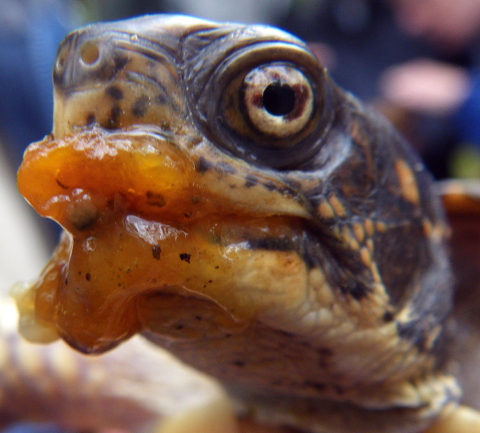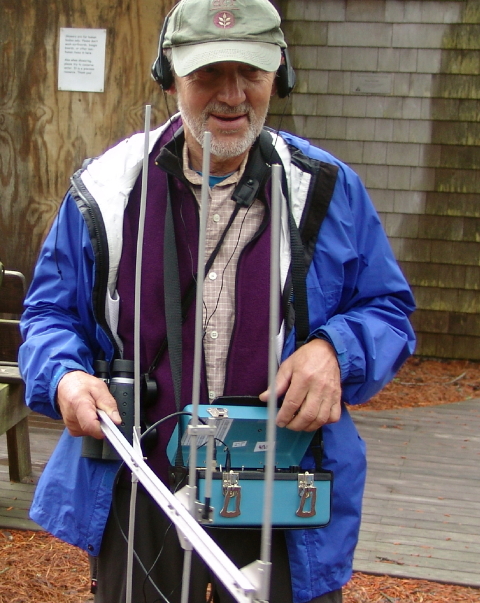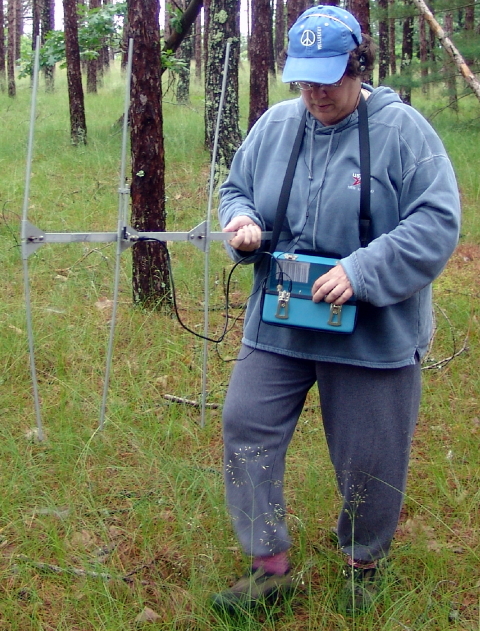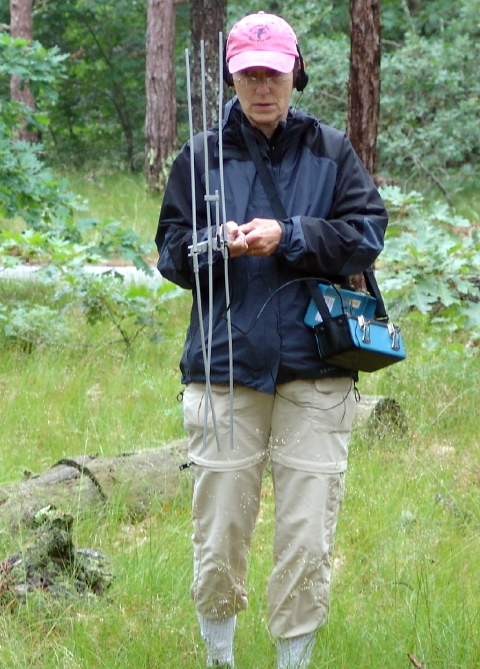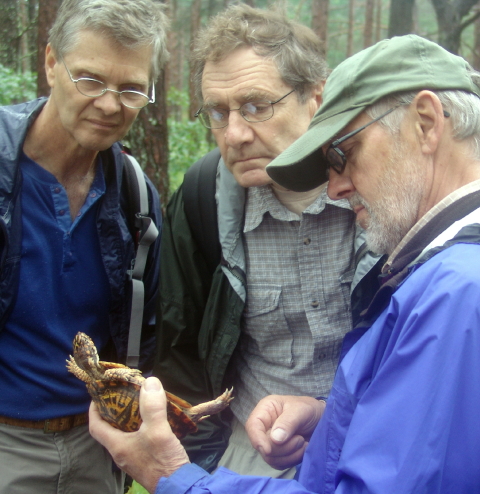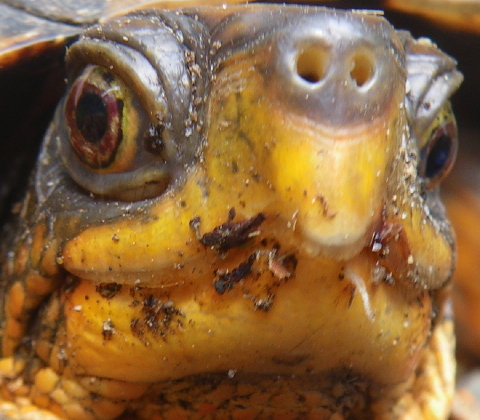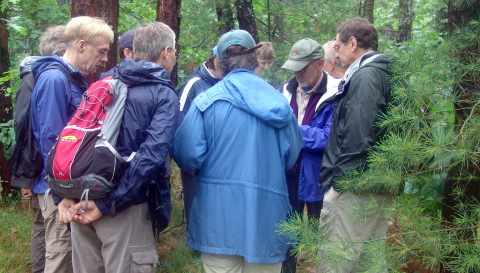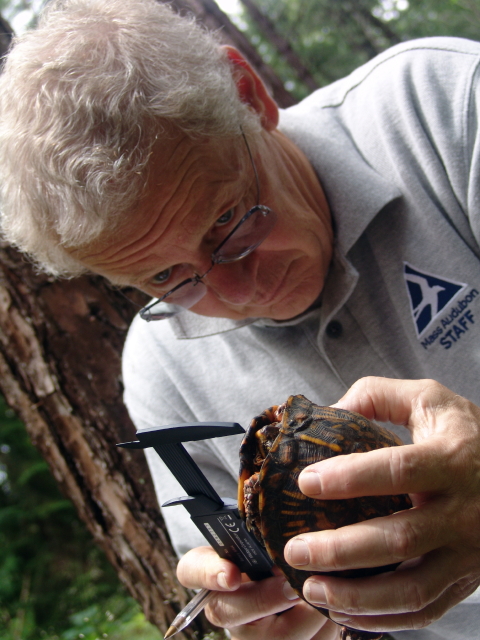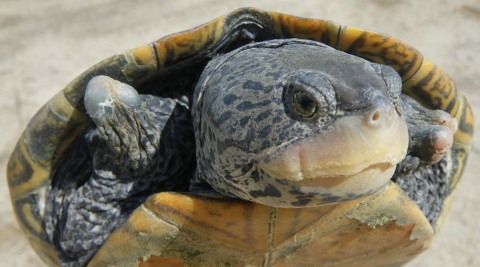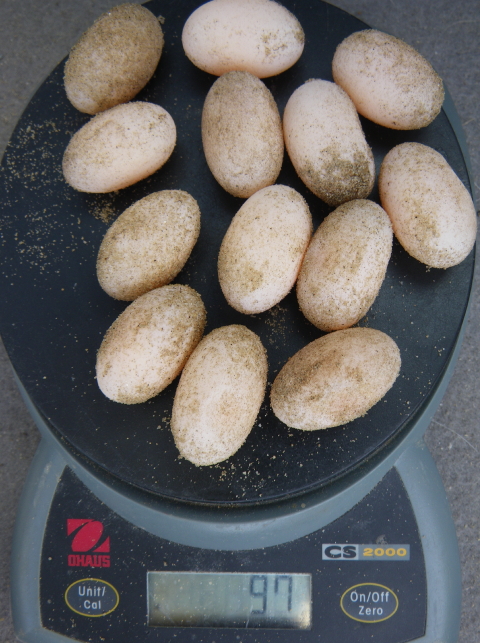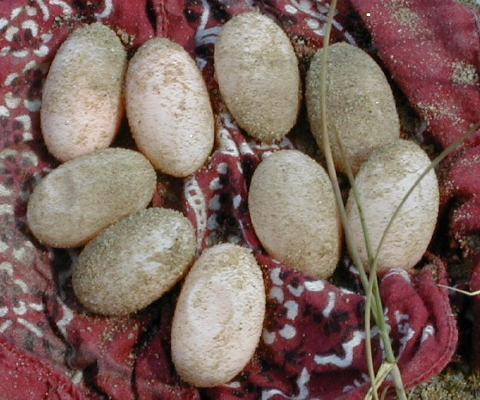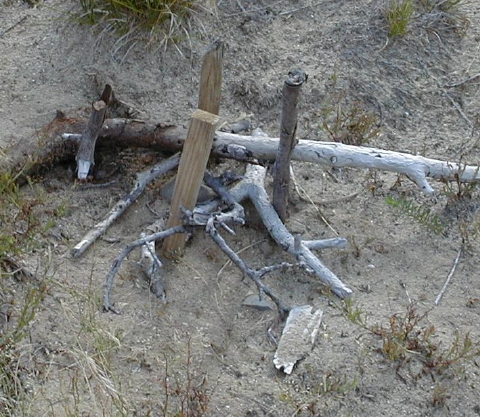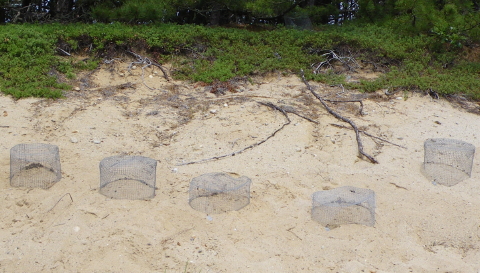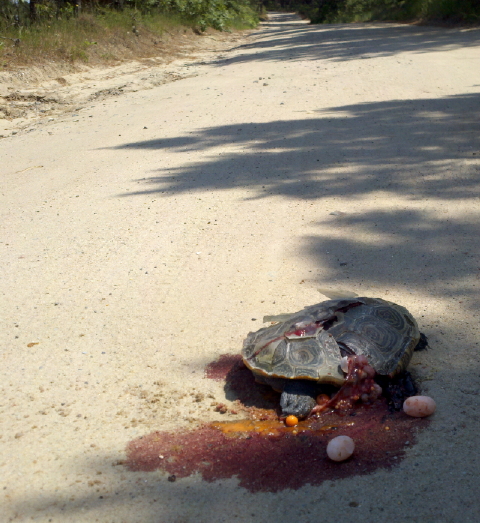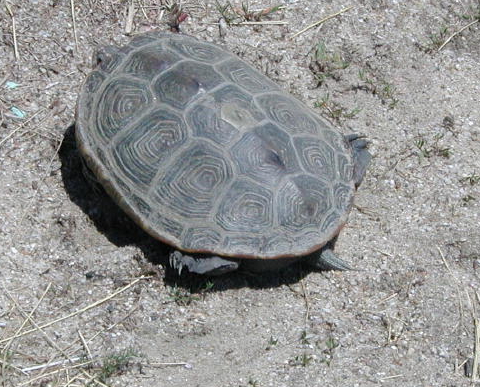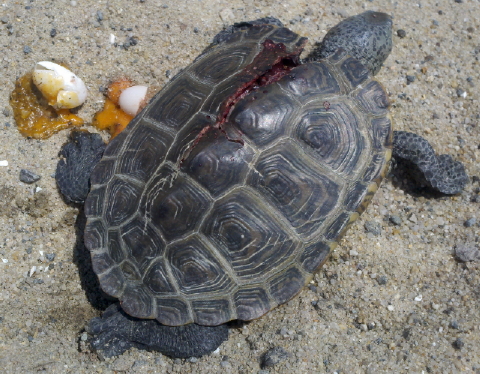Eastern Box Turtle in Paradise
Humans may not appreciate sustained summer rains, but Eastern box turtles consider these conditions paradise. Lots of moisture to keep hydrated while pursuing their most favored delicacy: slugs! Picture if you will that epic battle of speed and cunning … NOT between the tortoise and the hare, but between a lumbering box turtle and a slithering slug. No, it’s not a sleek cheetah chasing down a graceful gazelle in a breathless sprint. Yet it’s just as dramatic, and just as lethal. And the outcome painted on the turtle’s lips is just as satisfying … for the predator, that is.
Hans on the Hunt
With the rains emerged Eastern box turtles from under leaves and protective scrapes & burrows where they’ve hidden waiting for the perfect moment to move out of the woodlands and into the fields for foraging and mating and nesting.
Abbe Advances
Field school participants gained practice and experience by tracking down a radio-tagged 10-year-old box turtle. As the signal vectored the team toward the general area of the tagged turtle, eager eyes scanned the woodlands and discovered the gentle critter hiding under some dropped branches.
Pat on Point
With the confidence gained by this tracking exercise, the team cut loose to find untagged turtles scattered around more than a 1000 acres of Mass Audubon’s Wellfleet Bay Wildlife Sanctuary.
Eureka! Bruce, Peter & Hans Examine Box Turtle
As each Eastern box turtle was discovered, the team examined it to identify its gender and to assess its health. They weighed and recorded its mass, an indicator of how well hydrated these animals had become in these perfect turtle conditions. The team measured length and width of carapace (top shell) and plastron (bottom shell). They documented all these data and GPS’d the turtle’s location to add to more than three decades of Eastern box turtle studies on the Wellfleet Bay Wildlife Sanctuary.
